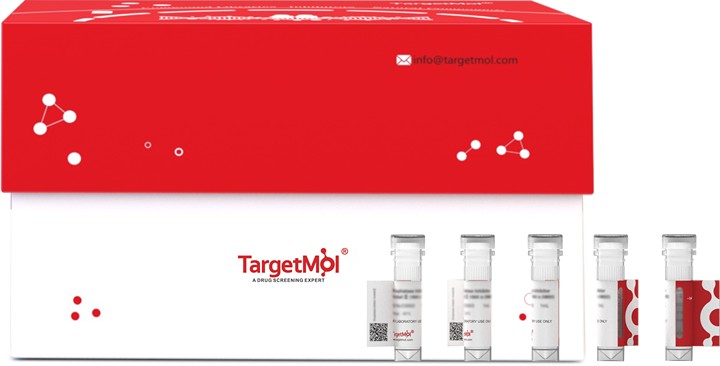Shopping Cart
- Remove All
 Your shopping cart is currently empty
Your shopping cart is currently empty

Substrate recognition component of a SCF-like ECS (Elongin BC-CUL2/5-SOCS-box protein) E3 ubiquitin-protein ligase complex which mediates the ubiquitination and subsequent proteasomal degradation of target proteins. Negatively regulates nitric oxide (NO) production and limits cellular toxicity in activated macrophages by mediating the ubiquitination and proteasomal degradation of NOS2. Acts as a bridge which links NOS2 with the ECS E3 ubiquitin ligase complex components ELOC and CUL5.

| Pack Size | Price | Availability | Quantity |
|---|---|---|---|
| 20 μg | $237 | In Stock | |
| 100 μg | $490 | 20 days | |
| 1 mg | $2,080 | 20 days |
| Biological Activity | Activity has not been tested. It is theoretically active, but we cannot guarantee it. If you require protein activity, we recommend choosing the eukaryotic expression version first. |
| Description | Substrate recognition component of a SCF-like ECS (Elongin BC-CUL2/5-SOCS-box protein) E3 ubiquitin-protein ligase complex which mediates the ubiquitination and subsequent proteasomal degradation of target proteins. Negatively regulates nitric oxide (NO) production and limits cellular toxicity in activated macrophages by mediating the ubiquitination and proteasomal degradation of NOS2. Acts as a bridge which links NOS2 with the ECS E3 ubiquitin ligase complex components ELOC and CUL5. |
| Species | Human |
| Expression System | E. coli |
| Tag | N-6xHis |
| Accession Number | Q96BD6 |
| Synonyms | SPSB1,SPRY domain-containing SOCS box protein 1 |
| Amino Acid | MGQKVTGGIKTVDMRDPTYRPLKQELQGLDYCKPTRLDLLLDMPPVSYDVQLLHSWNNNDRSLNVFVKEDDKLIFHRHPVAQSTDAIRGKVGYTRGLHVWQITWAMRQRGTHAVVGVATADAPLHSVGYTTLVGNNHESWGWDLGRNRLYHDGKNQPSKTYPAFLEPDETFIVPDSFLVALDMDDGTLSFIVDGQYMGVAFRGLKGKKLYPVVSAVWGHCEIRMRYLNGLDPEPLPLMDLCRRSVRLALGRERLGEIHTLPLPASLKAYLLYQ |
| Construction | 1-273 aa |
| Protein Purity | > 85% as determined by SDS-PAGE. |
| Molecular Weight | 36.9 kDa (predicted) |
| Endotoxin | < 1.0 EU/μg of the protein as determined by the LAL method. |
| Formulation | If the delivery form is liquid, the default storage buffer is Tris/PBS-based buffer, 5%-50% glycerol. If the delivery form is lyophilized powder, the buffer before lyophilization is Tris/PBS-based buffer, 6% Trehalose, pH 8.0. |
| Reconstitution | Reconstitute the lyophilized protein in sterile deionized water. The product concentration should not be less than 100 μg/mL. Before opening, centrifuge the tube to collect powder at the bottom. After adding the reconstitution buffer, avoid vortexing or pipetting for mixing. |
| Stability & Storage | Lyophilized powders can be stably stored for over 12 months, while liquid products can be stored for 6-12 months at -80°C. For reconstituted protein solutions, the solution can be stored at -20°C to -80°C for at least 3 months. Please avoid multiple freeze-thaw cycles and store products in aliquots. |
| Shipping | In general, Lyophilized powders are shipping with blue ice. Solutions are shipping with dry ice. |
| Research Background | Substrate recognition component of a SCF-like ECS (Elongin BC-CUL2/5-SOCS-box protein) E3 ubiquitin-protein ligase complex which mediates the ubiquitination and subsequent proteasomal degradation of target proteins. Negatively regulates nitric oxide (NO) production and limits cellular toxicity in activated macrophages by mediating the ubiquitination and proteasomal degradation of NOS2. Acts as a bridge which links NOS2 with the ECS E3 ubiquitin ligase complex components ELOC and CUL5. |

Copyright © 2015-2025 TargetMol Chemicals Inc. All Rights Reserved.